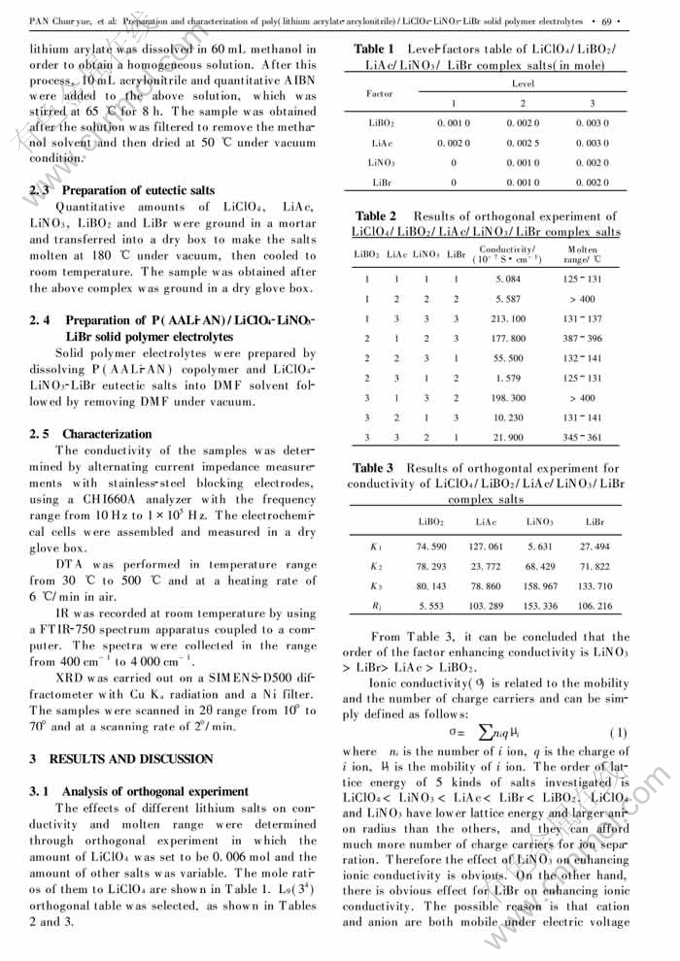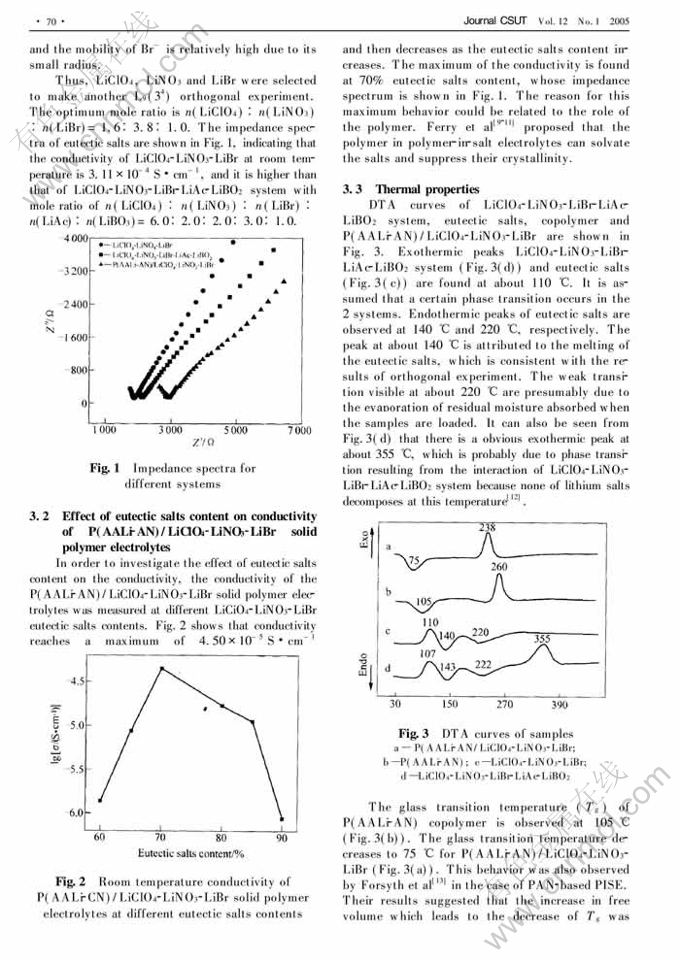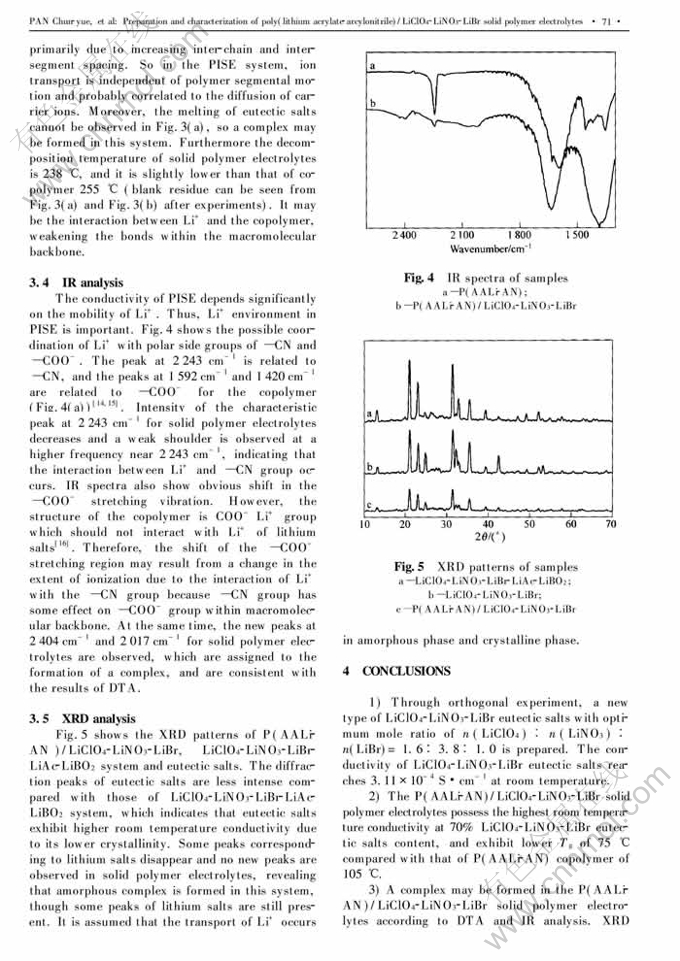Preparation and characterization of poly(lithium acrylate-arcylonitrile)/ LiClO4-LiNO3-LiBr solid polymer electrolytes①
来源期刊:中南大学学报(英文版)2005年第1期
论文作者:潘春跃 袁云兰 陈振华 徐先华 张坚
文章页码:68 - 72
Key words:solid polymer electrolyte; conductivity; eutectic salt; LiClO4; LiNO3; LiBr; arcylonitrile
Abstract: Through orthogonal experiment, a new type of LiClO4-LiNO3-LiBr eutectic salt with optimum mole ratio of n(LiClO4)∶n(LiNO3)∶n(LiBr)=1.6∶3.8∶1.0 was prepared. The poly(lithium acrylate-acrylonitrile)/LiClO4-LiNO3-LiBr solid polymer electrolytes were prepared with poly ( lithium acrylate-acrylonitrile ) and LiClO4-LiNO3-LiBr eutectic salts. The effect of LiClO4-LiNO3-LiBr eutectic salts content on the conductivity of solid polymer electrolytes was studied by alternating current impedance method, and the structures of eutectic salts and solid polymer electrolytes were characterized by differential thermal analysis, infrared spectroscopy and X-ray diffractometry. The results show that the room temperature conductivity of LiClO4-LiNO3-LiBr eutectic salts reaches 3.11×10-4S·cm-1. The poly(lithium acrylate-acrylonitrile)/ LiClO4-LiNO3-LiBr solid polymer electrolytes possess the highest room temperature conductivity at 70% LiClO4-LiNO3-LiBr r eutectic salts content, and exhibit lower glass transition temperature of 75℃compared with that of poly(lithium acrylate-acrylonitrile) of 105℃. A complex may be formed in the solid polymer electrolytes from the differential thermal analysis and infrared spectroscopy analysis. X-ray diffraction results show that the poly(lithium acrylate-acrylonitrile) can suppress the crystallization of eutectic salts in this system.




